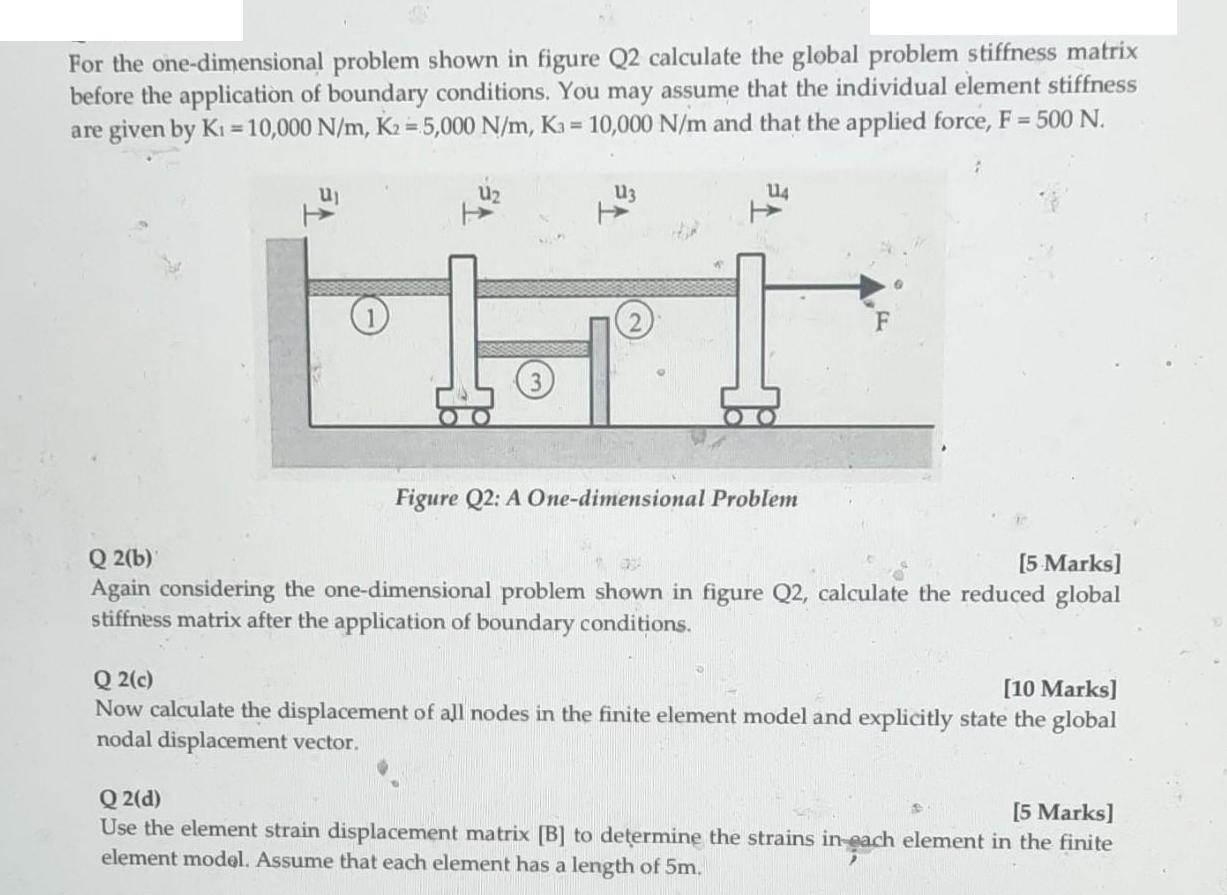Answered step by step
Verified Expert Solution
Question
1 Approved Answer
For the one-dimensional problem shown in figure Q2 calculate the global problem stiffness matrix before the application of boundary conditions. You may assume that

For the one-dimensional problem shown in figure Q2 calculate the global problem stiffness matrix before the application of boundary conditions. You may assume that the individual element stiffness are given by K = 10,000 N/m, K=5,000 N/m, Ka = 10,000 N/m and that the applied force, F = 500 N. 114 Figure Q2: A One-dimensional Problem [5 Marks] Q 2(b) Again considering the one-dimensional problem shown in figure Q2, calculate the reduced global stiffness matrix after the application of boundary conditions. Q2(c) [10 Marks] Now calculate the displacement of all nodes in the finite element model and explicitly state the global nodal displacement vector. Q 2(d) [5 Marks] Use the element strain displacement matrix [B] to determine the strains in each element in the finite element model. Assume that each element has a length of 5m.
Step by Step Solution
There are 3 Steps involved in it
Step: 1
Calculate the global problem stiffness matrix before the application of boundary con...
Get Instant Access to Expert-Tailored Solutions
See step-by-step solutions with expert insights and AI powered tools for academic success
Step: 2

Step: 3

Ace Your Homework with AI
Get the answers you need in no time with our AI-driven, step-by-step assistance
Get Started


